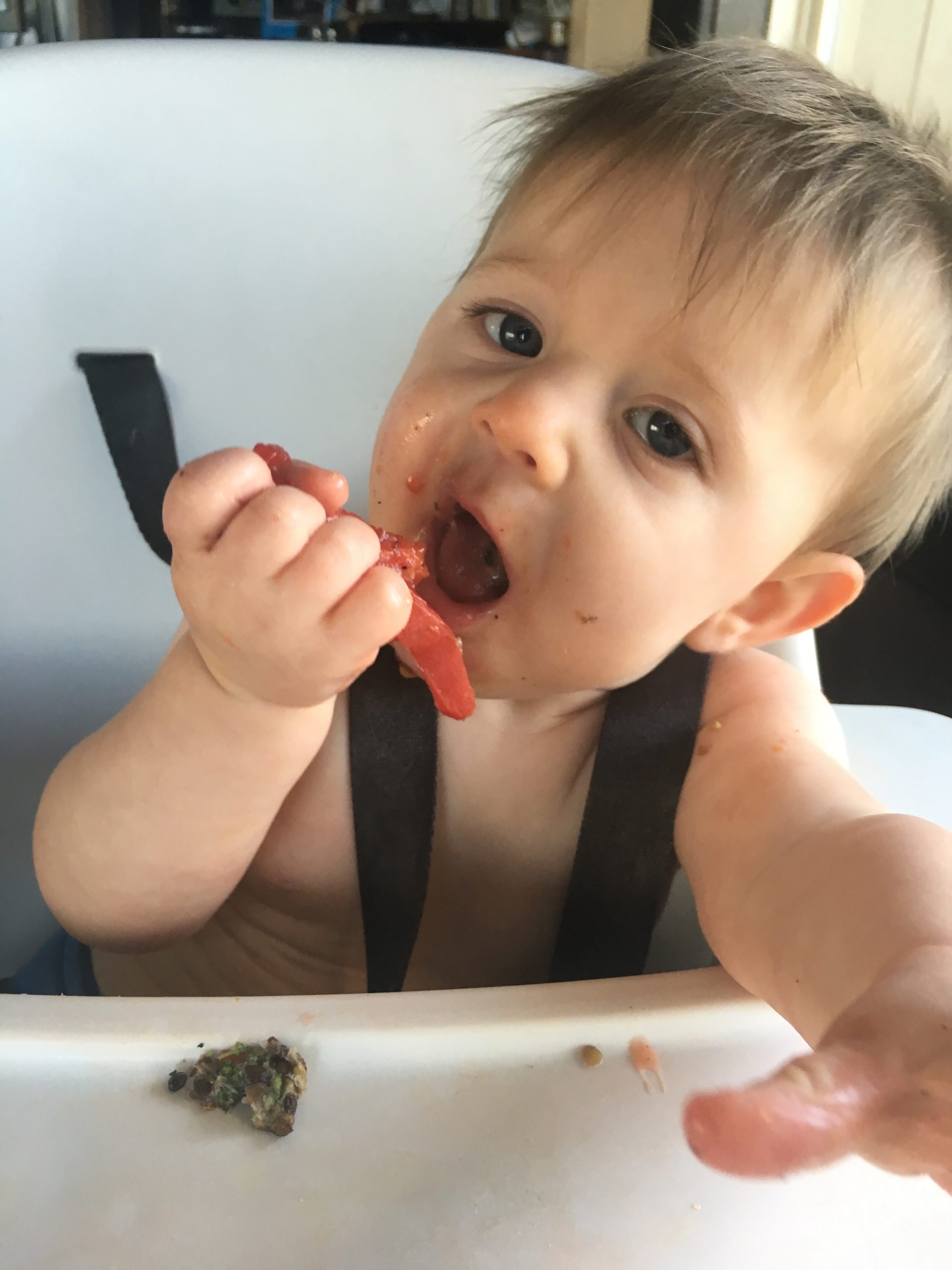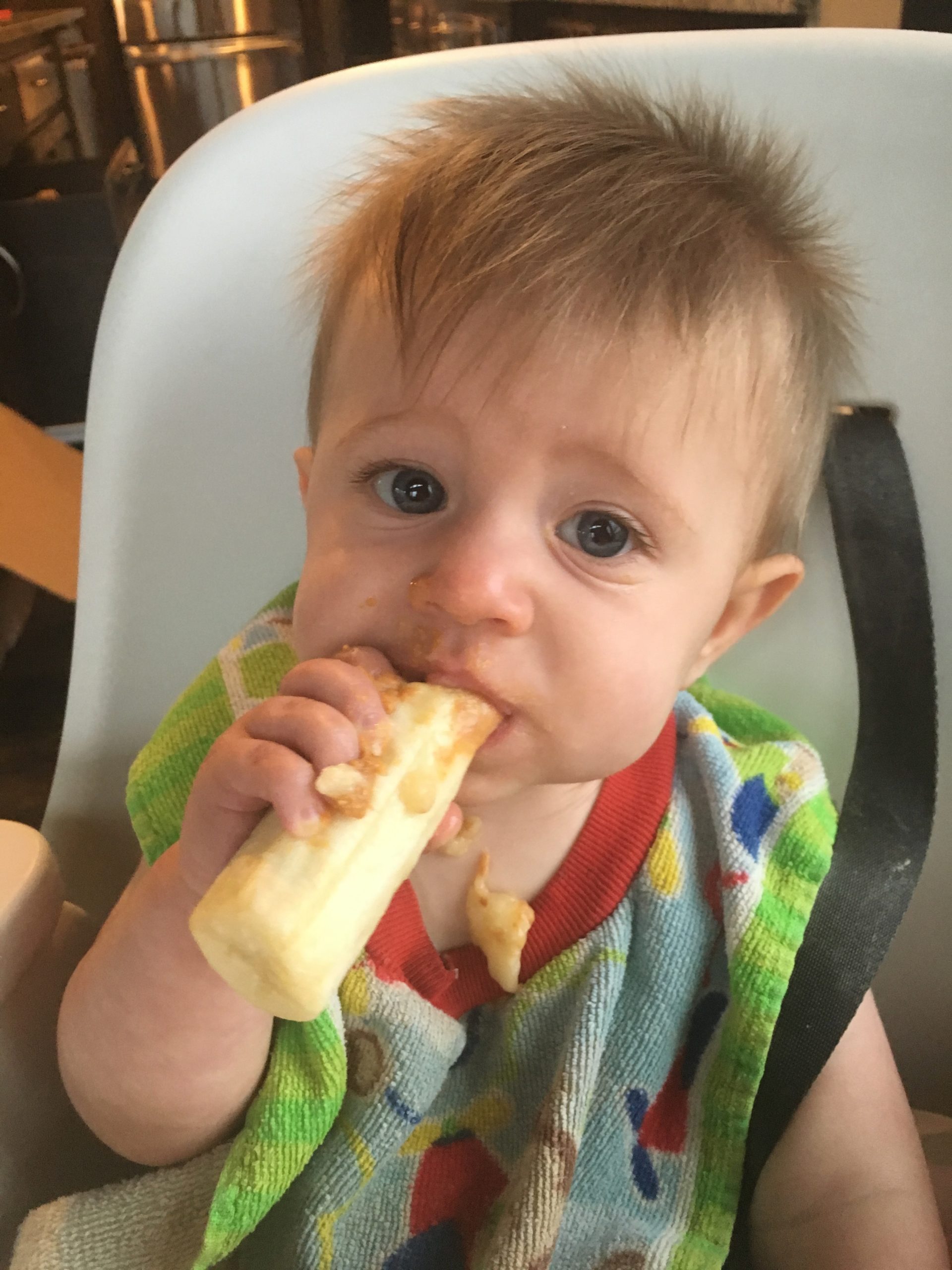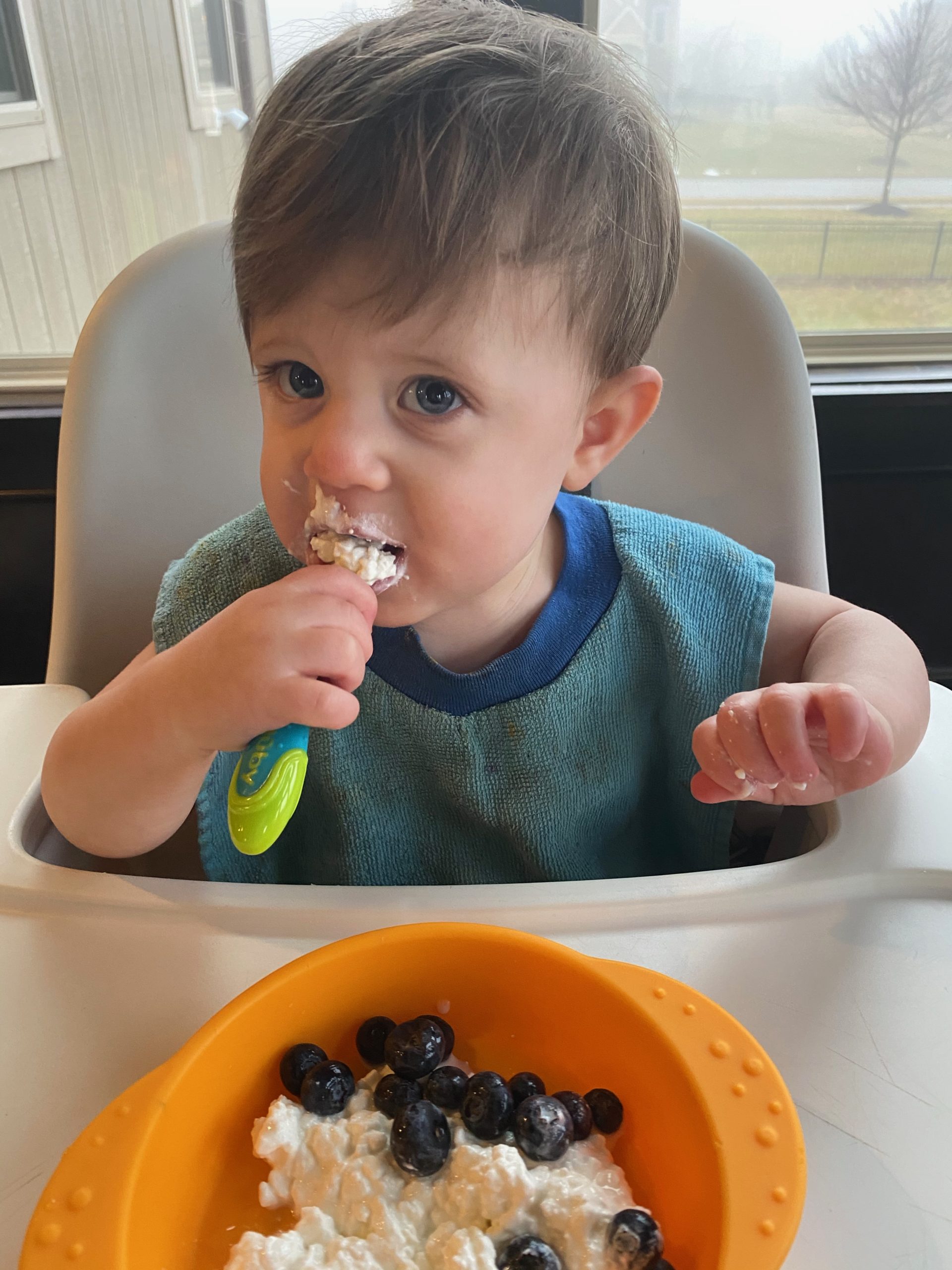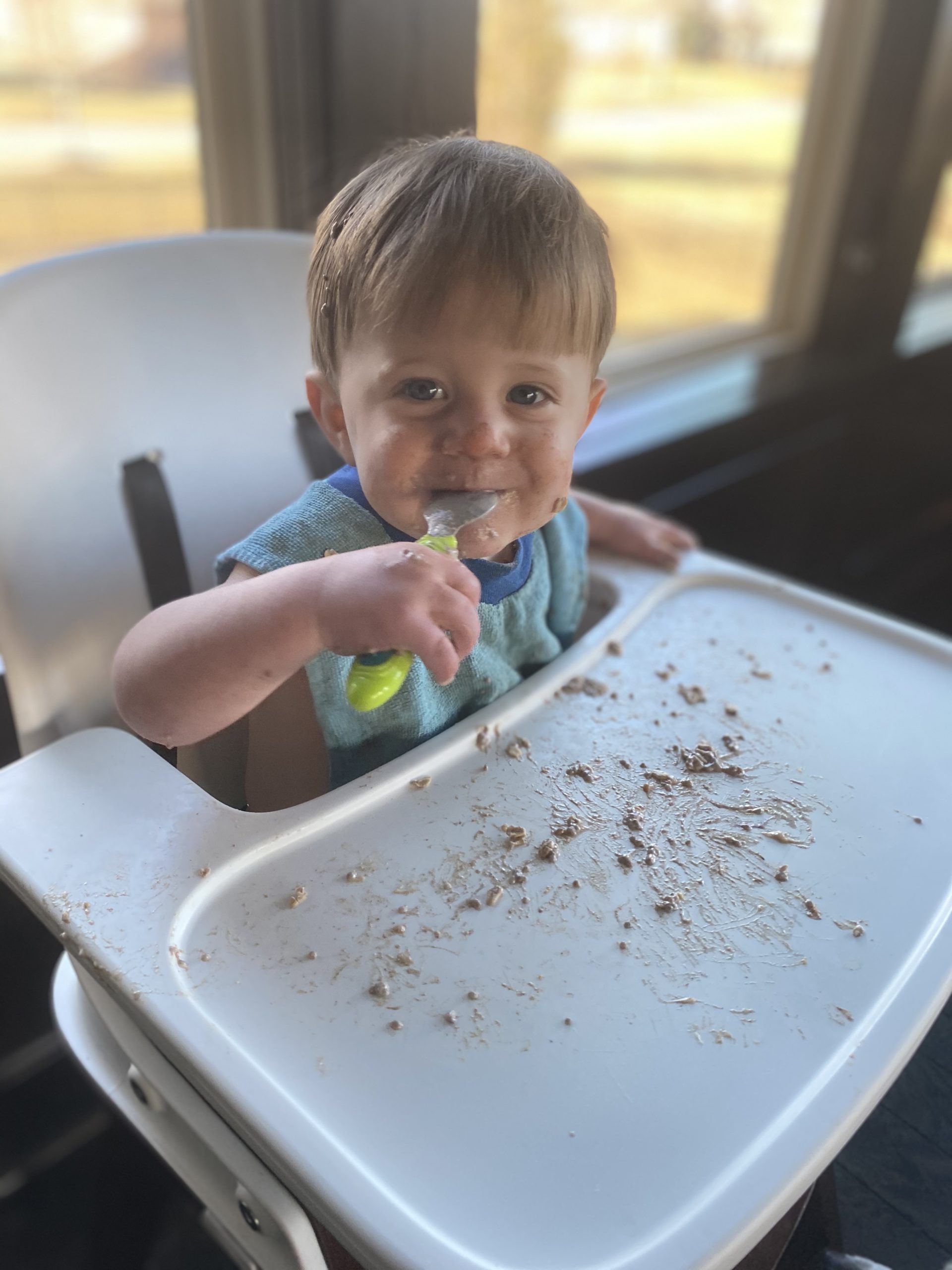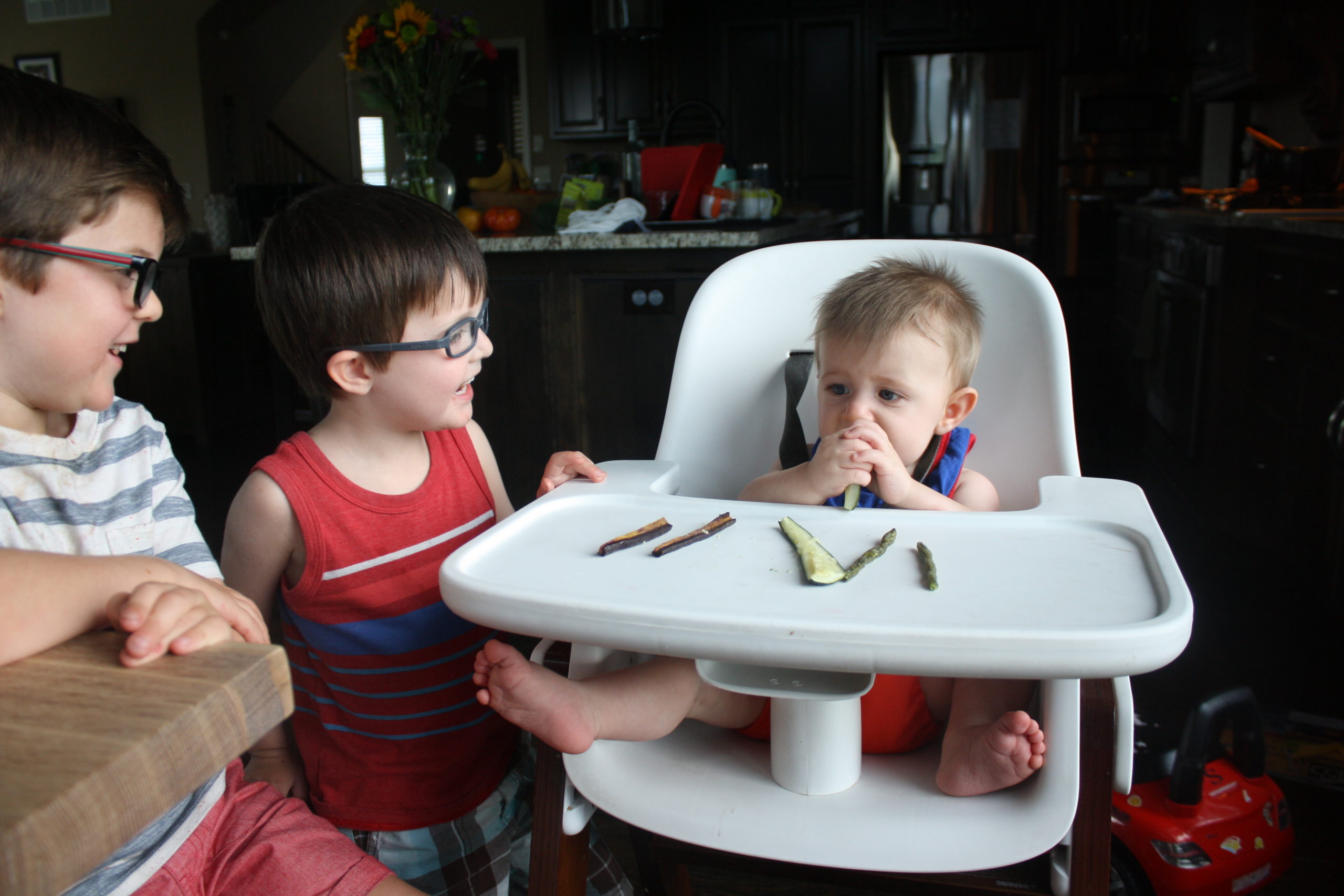I was convinced I was going to be that mom that made all my own baby food. Thankfully while I was pregnant with my first I stumbled across the book Baby Led Weaning by Gill Rapley and Tracey Murkett. Gill was a public health nurse and mother who coined this term many years ago.
The basic concept is your little skips the baby food and when ready to start eating, often around 6 months – they start with solid food.
I am so glad I read this book because it saved me countless hours in the kitchen because they basically eat (sometimes with modifications), whatever the rest of the family is eating.
Today, I am going to dive into a little bit more about the philosophy of Baby Led Weaning and some tips if this sounds like something you are interested in.
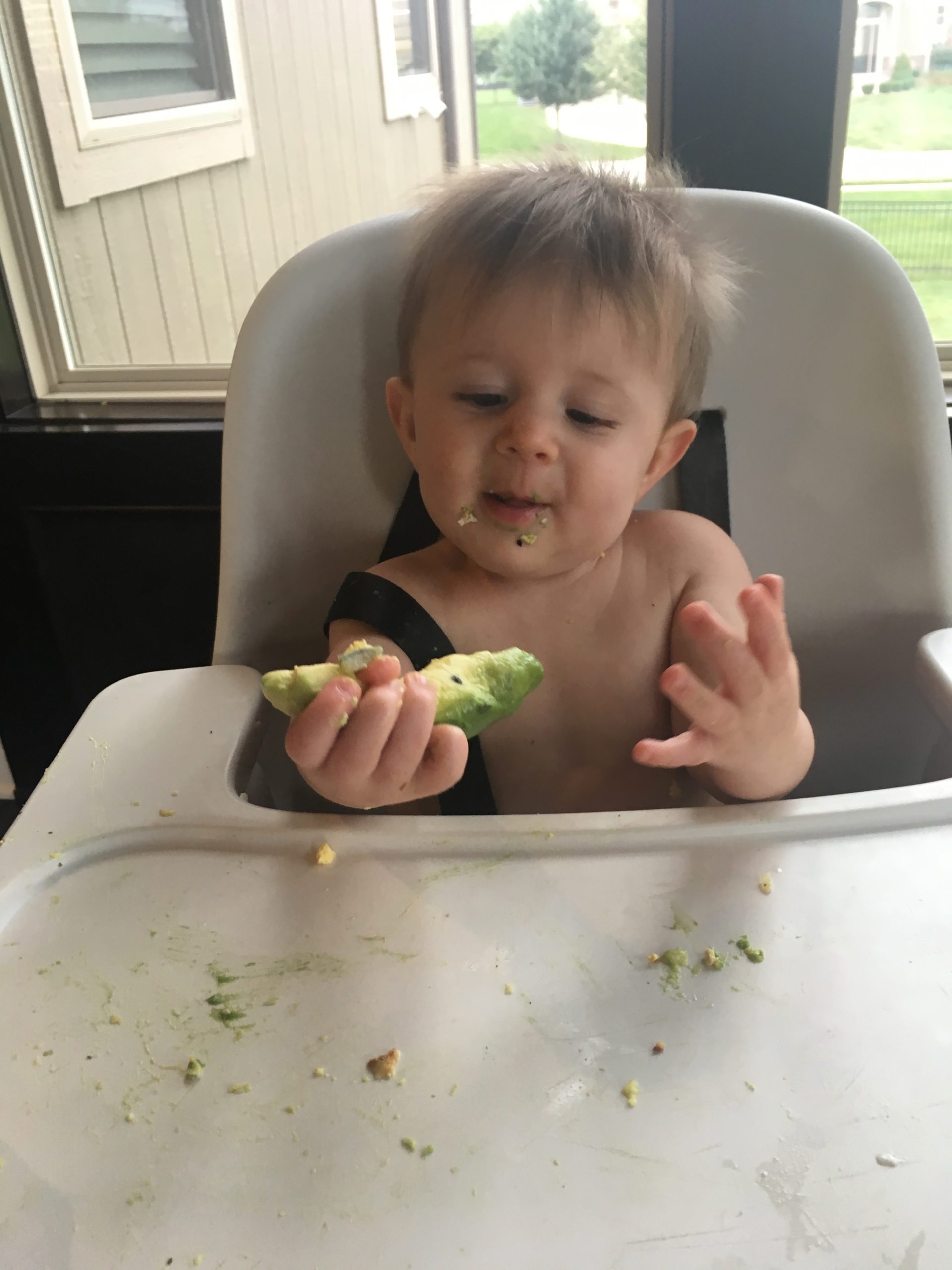
Baby Led Weaning Philosophy
Skip baby food. Your baby instead learns to bring food to their mouth, then to chew and finally to swallow.
This is accomplished by allowing the baby to self feed and presenting all food in the shape of french fries or something they can easily grab..
According to the authors of the book, spoon feeding is not necessary for many reasons.
- Don’t get to experiment and chewing will likely be delayed
- Learn to manage lumps better and more quickly if they feed themselves because it is easier to manipulate food when starts off at front of mouth
- Sucking food to back of throat triggers gag reflex
- If spoon fed, they are not in control of how much or how quickly eat
- If too many solids given which can happen with spoon feeding, it decreases appetite for nutrient dense milk
- Not as fun for baby to learn and explore
But won’t they choke?
Unlike breast milk or pureed, solid food needs to be actively moved to the back of the throat and can’t be done until they have discovered how to bite and chew.
Food will likely just fall out for a week or two.
Choking risk is minimized because the baby will only swallow when muscles of tongue cheeks and jaw all are coordinated.
*To note, gagging is a retching movement that pushes food away from the airway. This occurs as a mechanism to prevent choking and in young 6/7 month old occurs at the front of the throat so rarely means they are in danger of choking. As they get older, the reflex location moves back and becomes less of an early warning sign. Coughing is a way of dealing with this problem.
Benefits and Disadvantages
Benefits:
- Learning about food
- Appetite control
- Better nutrition
- Dealing with textures
- Learning to chew
- Chance to experience real food
- Positive attitude toward food
- Easier less complicated meals
- No meal time battles
- Tend to be less picky as toddler
- No need for games or tricks
- Eating out is easier
- Cheaper
Disadvantages:
- Messy!
- More meal prep (although if compared to making homemade baby food, actually less likely)
- Other peoples worries and judgement
- Comfort level of all those involved in feeding your baby
- Not as much of a mainstream practice


My Personal Tips and Takeaways
The beginning can be a little nerve racking but the food will fall out. And remember coughing is good. It is triggering the reflex to push the food out.
Only give what they can pick up. For example, you won’t give them a blueberry until they can pick it up themselves.
Helpful to only put one food on their tray at a time.
Skip the purees until they can spoon or dip themselves.
Embrace the mess!
Offer foods many times, even those they appear to not like. They will continue to put to their mouth and taste, even if just a tiny bit.
Start sign language. This is a great time for them to start learning to communicate with you when they want more.
Offer nutrient dense foods that are FULL flavor. Seriously, don’t skimp on the flavor. If you think your baby won’t eat turmeric or curry and you don’t ever introduce it, they may never! I tend to think parents ‘think’ their kids won’t like x food, so don’t give it to them ever because it isn’t ‘kid food’. Now as a society we are in the predicament of kids only wanting butter noodles and chicken nuggets.
Vary the options as much as you can, so they are getting different nutrition and also different exposures for taste, texture, etc. Remember just make into a French fry shape.
Start the meal with the veggies and don’t give fruits until the end of the meal. I actually opted to do no fruit for a while. Once they have sweet food, they are more likely to turn away the not so sweet options.
Make sure to incorporate the top allergenic foods early and often. Work with your pediatrician on this, but two suggestions we did a lot was make an egg omelet (with veggies after I knew they could tolerate the egg alone) and cut into that fry shape. Also, a tiny bit of peanut butter on a cooked carrot, sweet potato or even toast is another idea for incorporating early.
Offer single foods until you know no reaction and only introduce one new food a day. This allows you to monitor for reactions.
Once a food has ‘passed’, it is perfectly fine to mix with others. One of my favorite things to do is make leftovers into patties by mixing everything together and adding a beaten egg to hold it together. Bake or sear it in a pan until browned on the sides and then store in a freezer safe container. You can do this same thing with any food, not just left overs. Open a can of beans, chop your favorite veggies and make into a patty. This ensures you always have something on hand for baby to eat!
My personal mentality with this was for 6 months I committed to not having my baby eat anything processed, sweet (except fruit) and nothing but home cooked meals. That may not work for you, but relying on my freezer helped me drastically accomplish this. Remember those patties. Other ideas: mini muffins with added veggies, beans, nut butter + egg, veggie and potato frittata muffins. If you scour the internet, you will find lots of ideas I am sure!
As I mentioned, make sure to work with your pediatrician to find a plan that works for all of you but I can say from personal experience my kids LOVE FOOD now and I attribute it partly to this!
